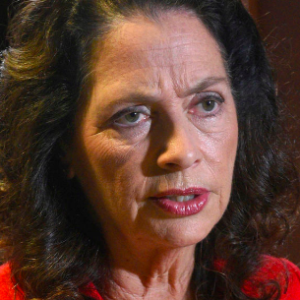“I believe that the New Hampshire economy is not working.”
So says Molly Kelly as she campaigns for the governor’s office against a popular incumbent at a time of record economic growth. While Gov. Chris Sununu gleefully touts what he believes is the Granite State’s economic success (“Our unemployment rate in Coos County is lower than Massachusetts’—can you believe that?!”), Kelly and her Democratic allies are trying to tell a very different story:
“We have people who are working two or three jobs and they still can’t put food on the table,” Kelly says. “Too many Granite Staters are being left behind by the Trump-Sununu agenda that takes good care of corporate special interests at the expense of children and families.”
And, Kelly adds, there are too many people working for minimum wage—a minimum wage that is far too low. Molly Kelly wants to more than double it, from $7.25/hour to $15/hour. It’s an agenda her fellow Democrats support, and they have announced their “Granite State Opportunity Plan” to address the fact that, as Democratic State Senator Donna Soucy put it, “Wages are not rising, and too many families are trying to make ends meet by working multiple jobs.”
“It’s a plan to help everyone, not just a few,” Soucy says.
Molly Kelly says that, too. A lot. In fact, she used the phrase “not just a few” four different times in a single five-minute interview on WMUR as she made her case against Chris Sununu.
But who exactly are “the few?” Is it true that New Hampshire’s a state where wages aren’t rising, where “the many” are on food stamps, or working multiple, minimum-wage jobs while “the few” prosper? Let’s look at the numbers:
“Too Many People Working for Minimum Wage”
According to information provided to NHJournal by the state Economic and Labor Market Information Bureau, there were an estimated 8,000 New Hampshire residents employed at or below the minimum hourly wage in 2017, excluding any tips or commissions. Yes, that’s right: 8,000. In a state of 1.3 million.
That number represents just 1.1% of New Hampshire’s employed residents. If it seems small, it is. But when compared to the national average—around 2.3 percent—it’s even smaller. Most people advocating the #FightFor15 don’t realize it, but only a fraction of adult Americans work for minimum wage. And even by that measure, New Hampshire has very few minimum-wage workers.
Still, the case could be made that even the 1 percent deserves a higher minimum wage. If so few people earn it, why not take Molly Kelly’s advice and raise it anyway?
“Doubling the state’s minimum wage to $15 per hour will hurt the very group of workers the policy is intended to help,” Michael R. Strain, economist at the American Enterprise Institute, tells NHJournal. He recently published a study showing that large minimum-wage increases like the one proposed by Kelly have a negative impact on hiring. “It will make it much harder for workers with relatively less experience and fewer skills to find employment. And it will increase the prices those workers face, as well,” Strain said.
“Too Many Families Trying to Make Ends Meet Working Multiple Jobs.”
According to the Economic and Labor Market Information Bureau, just 4.4 percent of employed Granite Staters, about 32,000 people, work at least two jobs. “These numbers don’t differentiate whether the jobs were full-time or part-time,” the Bureau’s research analyst, Bob Cote, tells NHJournal.
They also don’t tell us how many of those workers are choosing to work multiple part-time jobs for lifestyle reasons, like seasonal work, etc. What these number do show, definitively, is that very few New Hampshire workers hold multiple jobs.
Wages Are Not Rising
Actually, they are. “New Hampshire experienced an average weekly wage growth of 2.9% from 2016 to 2017. This represents wages covered by unemployment insurance programs and is not adjusted for inflation,” the Bureau reports.
In addition, New Hampshire has the second highest average household income in the U.S. at $75,675 (only Maryland’s is higher) and average personal incomes jumped 3.7 percent in 2017—also the second-highest rate in the nation. So the argument that the Granite State has an income problem is difficult to defend.
However, it’s true that New Hampshire’s wage growth, as a percentage, has been slower than the national average of 3.3 percent. It’s one of the few data points where the Granite State trails the nation. Many economists attribute this to the fact that New England’s economy recovered more quickly from the Great Recession, and growth in other regions—particularly those more reliant on manufacturing—is just now catching up.
“Working families Can’t Put Food On the Table.”
In July, 2018, about 7 percent of New Hampshire’s population was receiving food stamps—86,000 state residents. That’s less than half the national average. And that number is down 8 percent since Sununu took office.
In short, as economist Ross Gittell, chancellor of the state’s community college system, told NHJournal: “The state’s economy has been steadily improving, and right now it’s the best it’s been at any point in the past decade.”
All of this data raises another interesting question: Where does Molly Kelly get hers?
What is the source of her claims about the New Hampshire economy? Who is her economic advisor? What’s the economic theory behind her approach of raising business taxes, raising wage costs and higher energy prices?
These could be sound, pro-growth policies. No doubt she will make that case on the campaign trail. But it wouldn’t hurt for someone to check Molly Kelly’s math.

